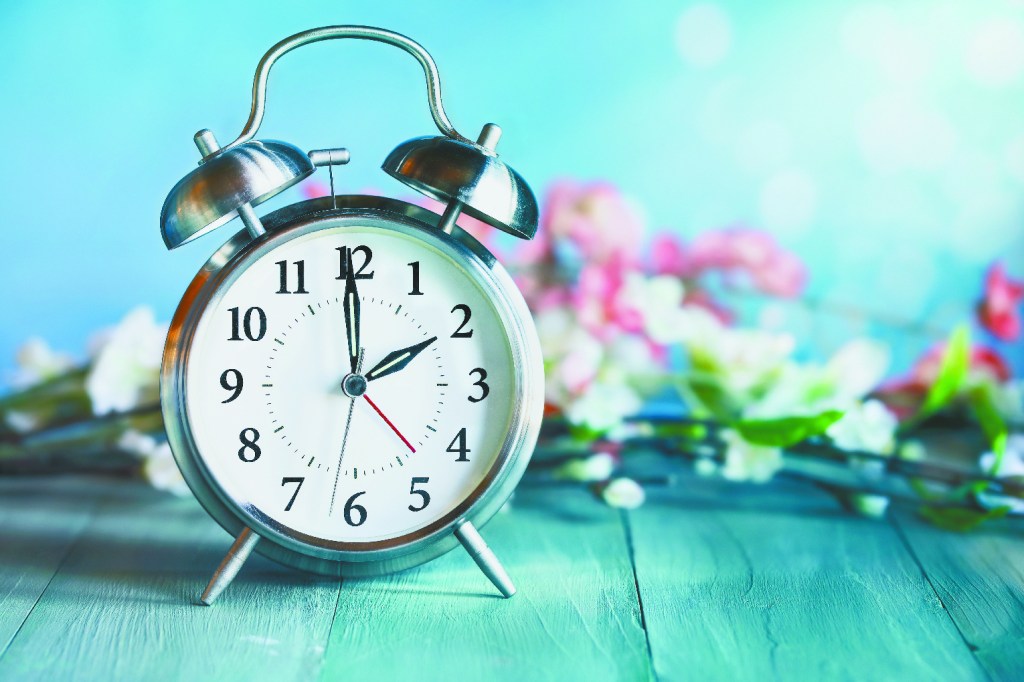Daylight Savings Time Change: What You Need to Know This Weekend
Published 2:14 pm Thursday, March 6, 2025
|
Getting your Trinity Audio player ready...
|
As the weekend approaches, many people are gearing up for the annual change that affects our clocks: Daylight Savings Time (DST). This year, DST will begin on Sunday, March 9, 2025, at 2:00 AM local time, marking the transition to longer days and shorter nights. While this shift can be exciting for some, it also brings with it some important things to keep in mind to help make the transition as smooth as possible.
What Is Daylight Savings Time?
Daylight Savings Time is the practice of moving the clock forward by one hour in the spring and then back by one hour in the fall. The idea is to make better use of daylight during the longer days of spring and summer. The clocks “spring forward” in the spring and “fall back” in the fall, allowing us to enjoy more daylight during the evening hours.
The history of DST goes back over a century, with the main goal of saving energy by reducing the need for artificial lighting in the evening. Though some have questioned its effectiveness over the years, it remains widely used in many parts of the world, including the United States and much of Europe.
Why Is This Change Important?
The DST shift is more than just a minor inconvenience of adjusting clocks. It can have real-world impacts on our sleep patterns, health, and daily routines. The “spring forward” event often leads to disruptions in our sleep schedule, as we lose an hour of sleep. This sudden change can lead to a phenomenon known as “social jetlag,” which can cause fatigue, irritability, and difficulty concentrating for a few days after the change.
Additionally, research has shown that the first few days after the switch can lead to an increase in accidents, both on the road and in workplaces, as our bodies adjust to the new rhythm. While the risk might be small, it’s still a good idea to take extra caution during the first few days of the time change.
How to Adjust to the Time Change
To help your body adjust to the time change, here are a few tips:
- Gradually adjust your sleep schedule: If possible, try going to bed and waking up 15-30 minutes earlier each day leading up to the time change. This can help your body adjust to the new schedule more easily.
- Get plenty of sunlight: Exposure to natural light, especially in the morning, can help reset your body’s internal clock and make it easier to wake up earlier.
- Avoid caffeine and alcohol: These substances can interfere with your sleep and make it harder for your body to adjust.
- Stay active: Physical activity, especially outdoors, can also help regulate your sleep patterns and energy levels.
What About the Debate Over DST?
The shift to Daylight Savings Time sparks an ongoing debate. Many people feel that the practice is outdated and no longer serves its original purpose of saving energy, especially in our modern world with better lighting technology and more efficient devices. Several U.S. states, including Arizona and Hawaii, have opted out of the system entirely.
In fact, there has been growing momentum in recent years to make Daylight Savings Time permanent, eliminating the need for the clock change altogether. Some studies have suggested that a consistent time year-round could improve health outcomes by reducing disruptions to our sleep and circadian rhythms.
While no sweeping changes are expected this year, the conversation surrounding DST continues, and some states may push for changes in the near future.
Looking Ahead: The End of DST
The time change this weekend marks the beginning of DST, which will last until Sunday, November 2, 2025, when the clocks will “fall back” again and return to standard time.
Until then, enjoy the extra daylight hours! The time change signals the arrival of warmer weather and more opportunities to enjoy outdoor activities in the evening. However, remember to take care of your health and be mindful of how the shift may affect your routine in the first few days.
Conclusion
Daylight Savings Time is a unique event that affects millions of people every year. While it brings benefits like longer days and more daylight to enjoy after work, it can also come with challenges such as disrupted sleep and health impacts. With a little preparation, you can minimize the effects of the change and enjoy the extra daylight that comes with it. As the debate over DST continues, the time change for now remains a familiar ritual—just be sure to set your clocks ahead one hour this Sunday, March 9th!






